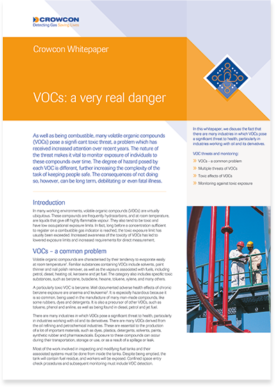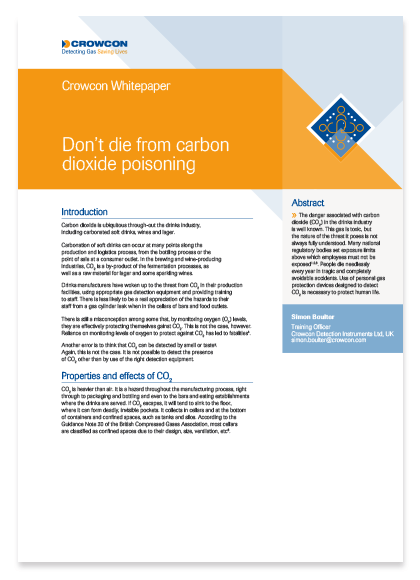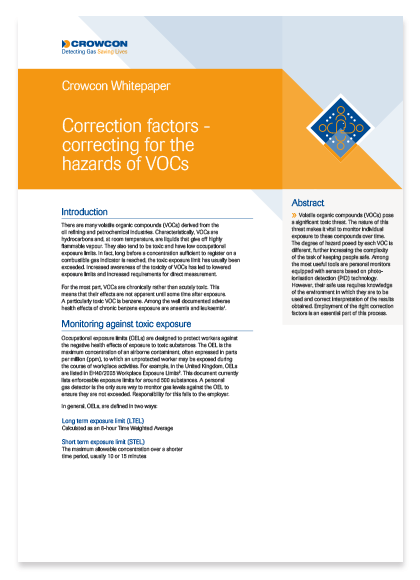In this whitepaper, Will Allum, Fixed Product Manager from Crowcon Detection Instruments Ltd, discusses the key reasons why sample systems should be more widely used and how customers in multiple industries are using sample systems to ensure gas safety.
Download

In many working environments, volatile organic compounds (VOCs) are virtually ubiquitous. These compounds are frequently hydrocarbons, and at room temperature, are liquids that give off highly flammable vapour. Increased awareness of the toxicity of VOCs has led to lowered exposure limits and increased requirements for direct measurement.
Read more
Volatile organic compounds (VOCs) tend to be liquids which readily give off vapour at room temperature, such as solvents and fuels. At high concentrations, these vapours can explode. At extremely low levels, they can be toxic. Increased awareness of the chronic toxicity of VOCs has led to reduced occupational exposure limits (OEL) and increased requirements for direct measurement.
Read more
The danger associated with carbon dioxide (CO2) in the drinks industry is well known. This gas is toxic, but the nature of the threat it poses is not always fully understood. People die needlessly every year in tragic and completely avoidable accidents. Use of personal gas protection devices designed to detect CO2 is necessary to protect human life.
Read more
Volatile organic compounds (VOCs) pose a significant toxic threat. The nature of this threat makes it vital to monitor individual exposure to these compounds over time. Among the most useful tools are personal monitors equipped with sensors based on photoionisation detection (PID) technology. However, their safe use requires knowledge of the environment in which they are to be used and correct interpretation of the results obtained. Employment of the right correction factors is an essential part of this process.
Read more